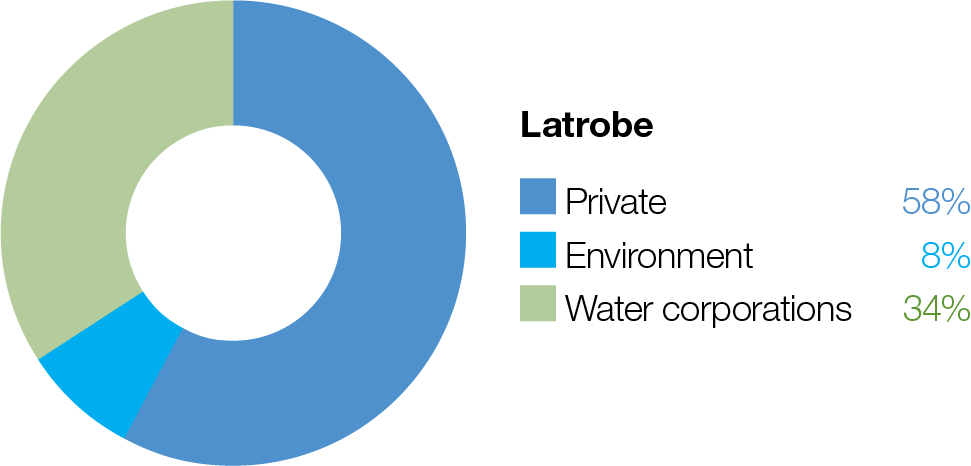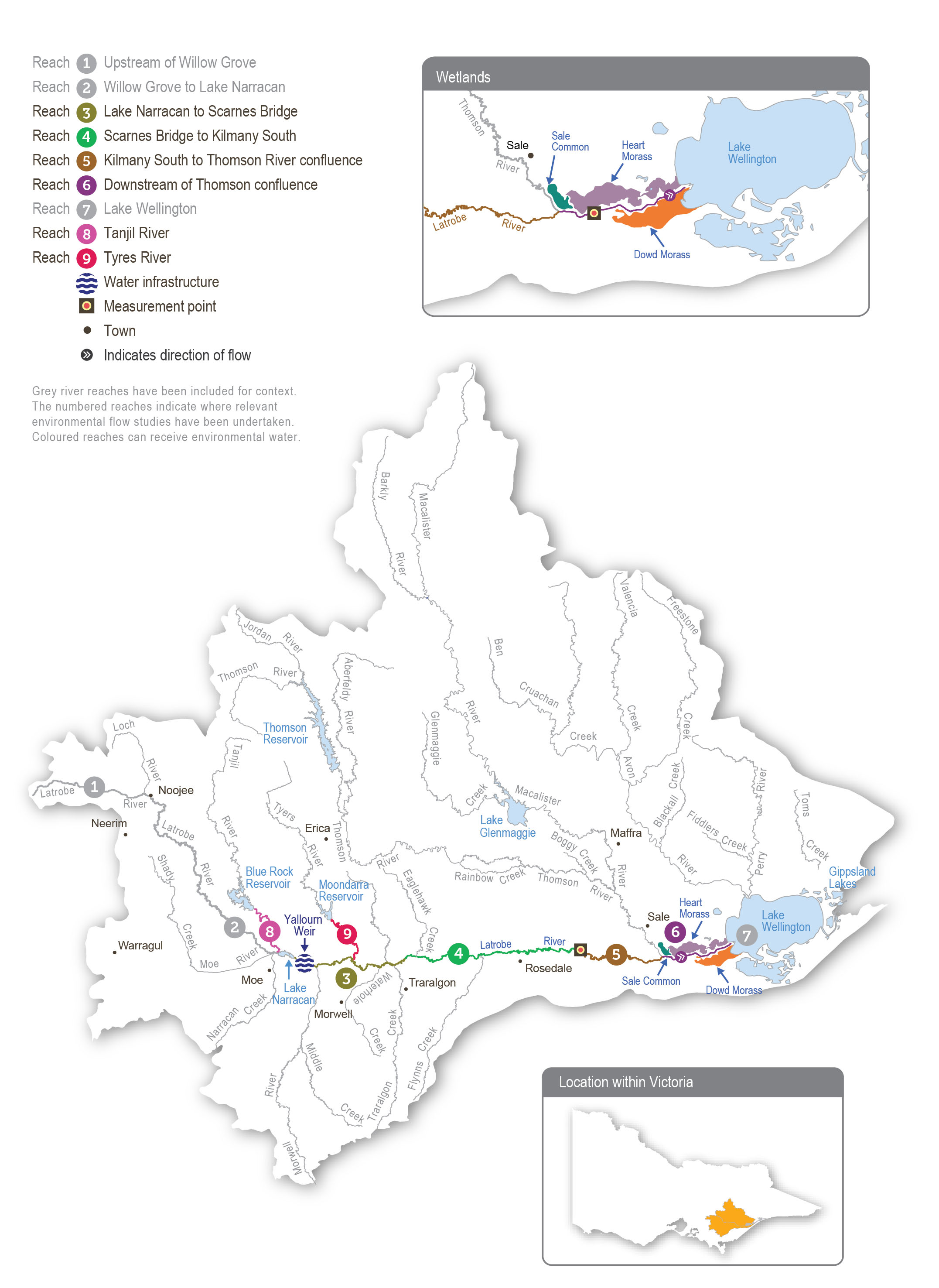Water for the environment is supplied to the Latrobe River from Blue Rock Reservoir on the Tanjil River. Blue Rock Reservoir also supplies water for irrigation, urban supply and electricity generation, and water for a paper mill in the Latrobe Valley.
The Latrobe River from Kilmany to the Thomson River confluence (reach 5) is a high-priority reach for delivering water for the environment because it contains endangered plant communities with good potential for rehabilitation. However, capacity constraints within reach 5 mean that some of the larger freshes required to meet environmental objectives in reaches 4, 5 and 6 cannot be delivered without flooding private land. Until this can be resolved, environmental flows will be managed to within- channel levels. Where possible, the flow in the Latrobe River is coordinated with freshes in the Thomson River to meet targets for the Latrobe River estuary.
Options to deliver water for the environment to the Latrobe River via the Tyers River may be investigated in 2023-24. These options include a physical transfer of water from Blue Rock Reservoir to Moondarra Reservoir via existing infrastructure operated by Gippsland Water or a temporary administrative transfer arrangement. Delivering water via the Tyers River would increase the proportion of the Latrobe catchment that could receive water for the environment without compromising outcomes in the main target reaches of the Latrobe River. If adopted, these options are expected to benefit native in-stream and streamside vegetation and non-migratory fish within the Tyers River.

Proportion of water entitlements in the Latrobe system held by private users, water corporations and environmental water holders on 30 June 2020



